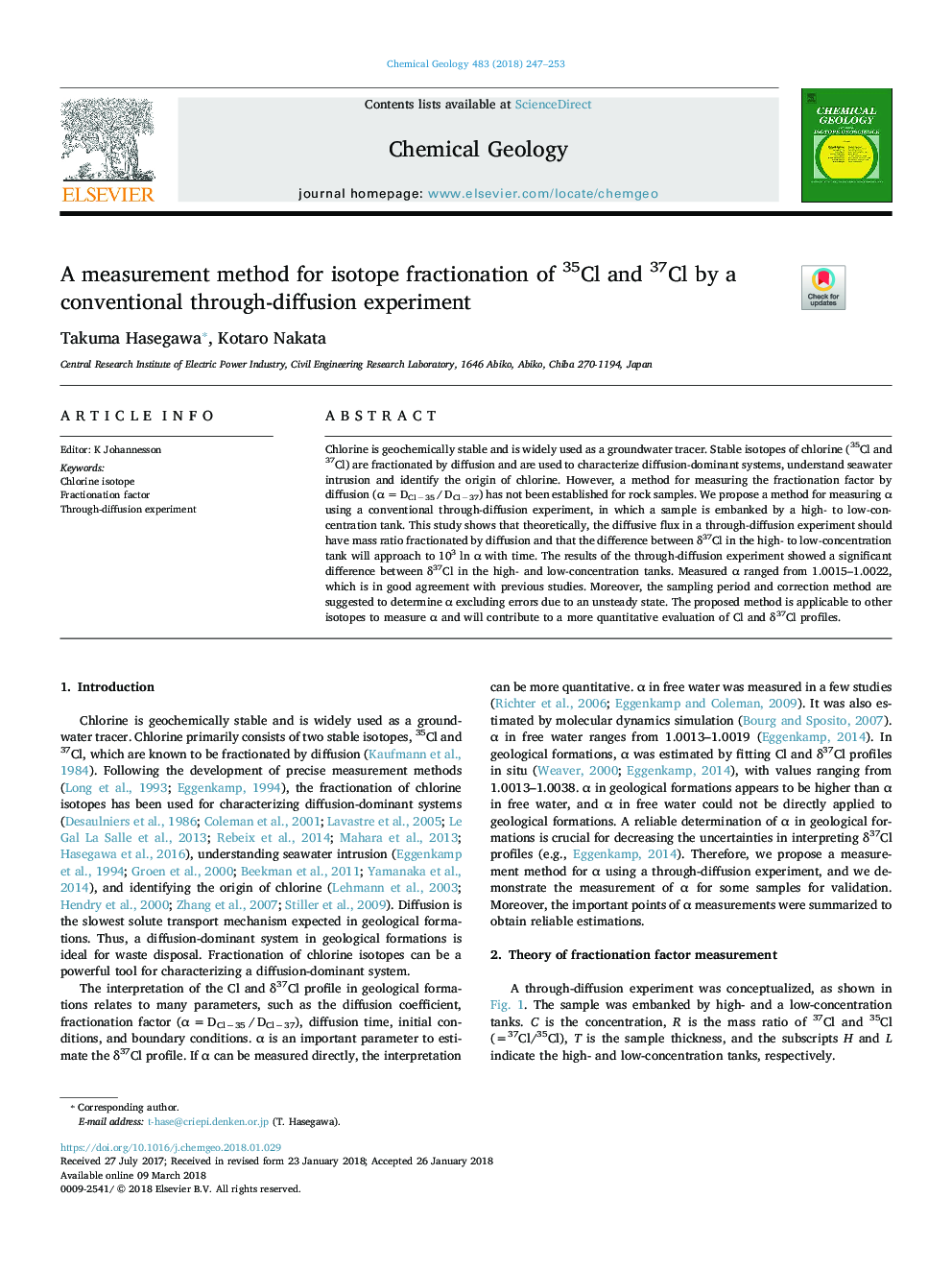| Article ID | Journal | Published Year | Pages | File Type |
|---|---|---|---|---|
| 8910284 | Chemical Geology | 2018 | 7 Pages |
Abstract
Chlorine is geochemically stable and is widely used as a groundwater tracer. Stable isotopes of chlorine (35Cl and 37Cl) are fractionated by diffusion and are used to characterize diffusion-dominant systems, understand seawater intrusion and identify the origin of chlorine. However, a method for measuring the fractionation factor by diffusion (αâ¯=â¯DClâ35â¯/â¯DClâ37) has not been established for rock samples. We propose a method for measuring α using a conventional through-diffusion experiment, in which a sample is embanked by a high- to low-concentration tank. This study shows that theoretically, the diffusive flux in a through-diffusion experiment should have mass ratio fractionated by diffusion and that the difference between δ37Cl in the high- to low-concentration tank will approach to 103 ln α with time. The results of the through-diffusion experiment showed a significant difference between δ37Cl in the high- and low-concentration tanks. Measured α ranged from 1.0015-1.0022, which is in good agreement with previous studies. Moreover, the sampling period and correction method are suggested to determine α excluding errors due to an unsteady state. The proposed method is applicable to other isotopes to measure α and will contribute to a more quantitative evaluation of Cl and δ37Cl profiles.
Keywords
Related Topics
Physical Sciences and Engineering
Earth and Planetary Sciences
Geochemistry and Petrology
Authors
Takuma Hasegawa, Kotaro Nakata,
